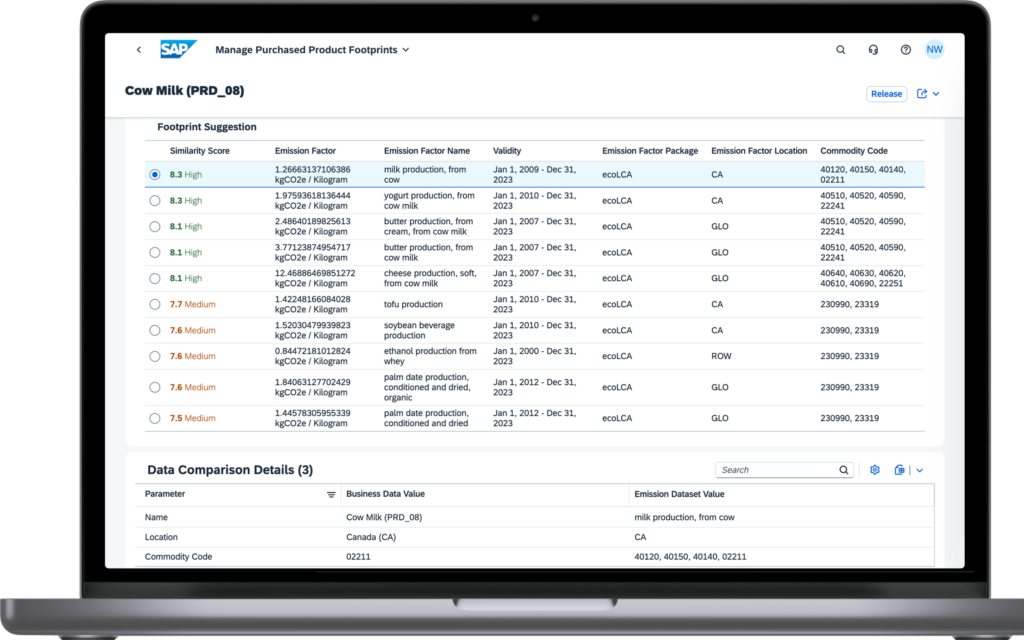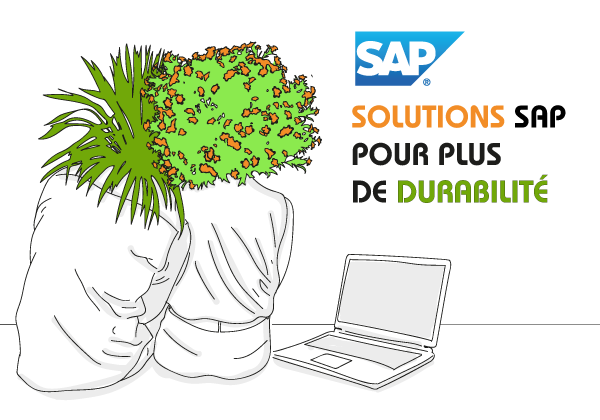Although not required by law, Applium decided to calculate its Carbon Footprint in 2020. The primary aim of this approach is to measure the emissions on which we depend in carrying out our activity as a company, so that we can then identify the relevant levers for action to reduce our impact.
Figures
In 2023, our carbon footprint is 1379 tonnes of CO2e, down 23% on 2022.
Our main carbon emission categories are as follows:
- 45.8% of emissions concern Purchasing of services
- 32.3% of emissions concern the Digital sector,
- 7.1% of emissions concern Food & Lodging,
Our economic carbon intensity is 66 kgCO2e/k€ of sales including, per k€ of sales :
- 1.1 kgCO2e on scope 1
- 0.46 kgCO2e on scope 2
- 64 kgCO2e on scope 3
The Scopes designate the scope of the Bilan Carbone’s GHG emissions, and are divided into 3 categories:
Scope 1
Direct GHG emissions, mainly due to the combustion of fossil fuels for heating or company vehicles.
Scope 2
Indirect emissions associated with the production of electricity and heat.
Scope 3
All other indirect emissions from your value chain (travel, purchasing, waste, etc.). This scope generally concentrates most emissions, which is the case at Applium with 98%. It is therefore on the emissions linked to this scope that we must act.
Employee intensity is the ratio of emissions linked to our employees to the average workforce over the year. It therefore concerns only certain items: travel, meals, IT products, office and teleworking. The average workforce is measured in full-time equivalents (FTE). It enables us to compare our carbon performance in terms of employees with that of other companies, by cancelling out the effect of the difference in headcount.
Our employee intensity in 2023 is 2.1 t CO2e/employee, down from 2.3 t CO2e/employee in 2022.
The decarbonization trajectory
From May to November 2024, as a member of the United Nations Global Compact France, Applium is taking part in the ” Climate Ambition Accelerator ” program for 6 months.
The Climate Ambition Accelerator is an acceleration program designed to equip companies with the knowledge and skills they need to accelerate progress towards science-based emissions reduction targets aligned with the 1.5°C trajectory, putting them on the path to carbon neutrality by 2050.
Together with participating companies, we have access to global best practices, peer-to-peer learning opportunities, hands-on activities, capacity-building sessions and on-demand training.
At Applium, we’re counting on this program to align our decarbonization trajectory with the SBTi, Science-Based Targets initiative. But making accurate, reliable calculations and developing a coherent, effective decarbonization strategy remains a challenge.
Using artificial intelligence to calculate carbon emissions
Applium’s customers are also encountering this difficulty. As already described in 2023 in previous articles Applium commits to SAP Sustainability – Applium and Applium4Green: SAP Sustainability with Applium.
Applium evolves its business model to offer the possibility of subscribing to and implementing SAP Sustainability Control Tower (SCT) and SAP Sustainability Footprint Management (SFM) solutions in particular.
In 2024, SAP is continuing to develop these solutions, and since the 2nd quarter has been offering a new integrated tool: the CCF (Corporate Carbon Footprint) calculator, which makes it much easier for employees to draw up a detailed carbon footprint.
Indeed, to calculate a product’s carbon footprint, users have to associate hundreds, even thousands or millions of internal materials and products with external life-cycle assessment emission factors obtained from internal sources or external databases.
This is largely a manual task, requiring considerable human resources, which are prone to manual error, and specialist knowledge of life cycle assessment (LCA).

SAP Sustainability Footprint Management provides automated, intelligent emission factor mapping suggestions, based on product name, product group, location and commodity code.
This will reduce the time needed to calculate carbon footprints and corporate carbon footprints, and increase overall accuracy, while enabling non-LCA experts to map emission factors with greater confidence.
The guided form functionality also included in the CCF calculator is also made available in SAP Sustainability Control Tower to retrieve information on the Environment section.
We will be happy to provide you with further information.





